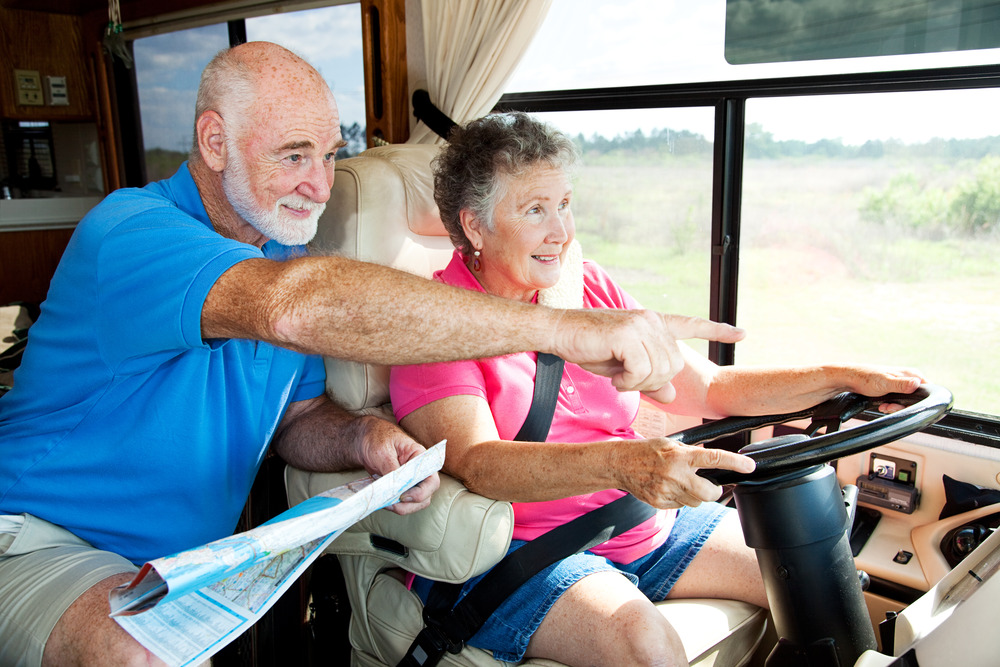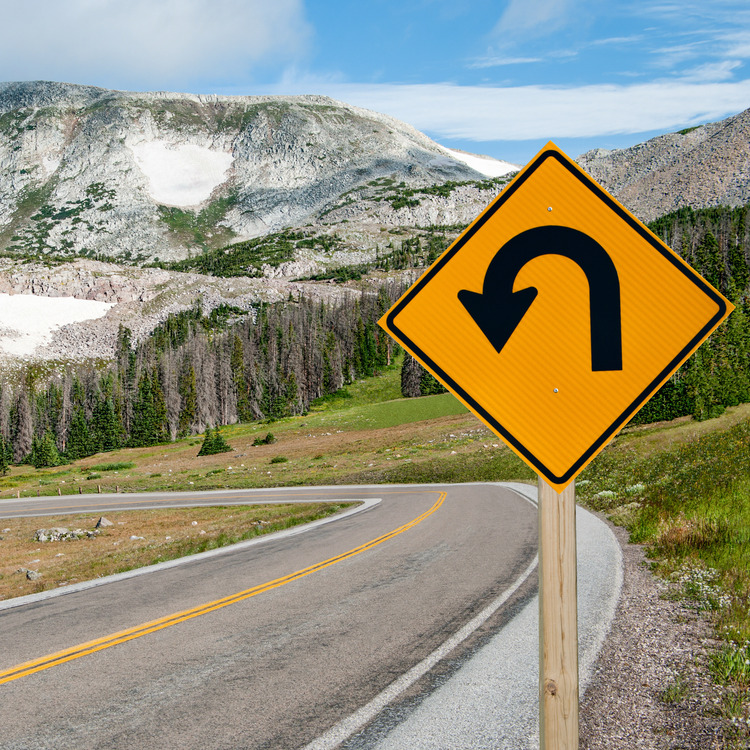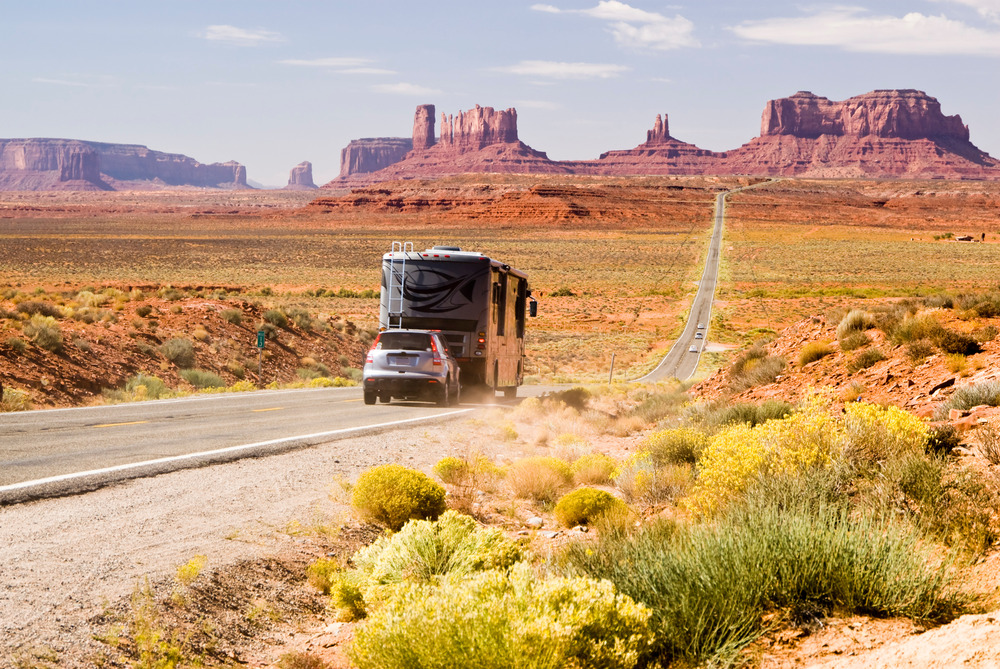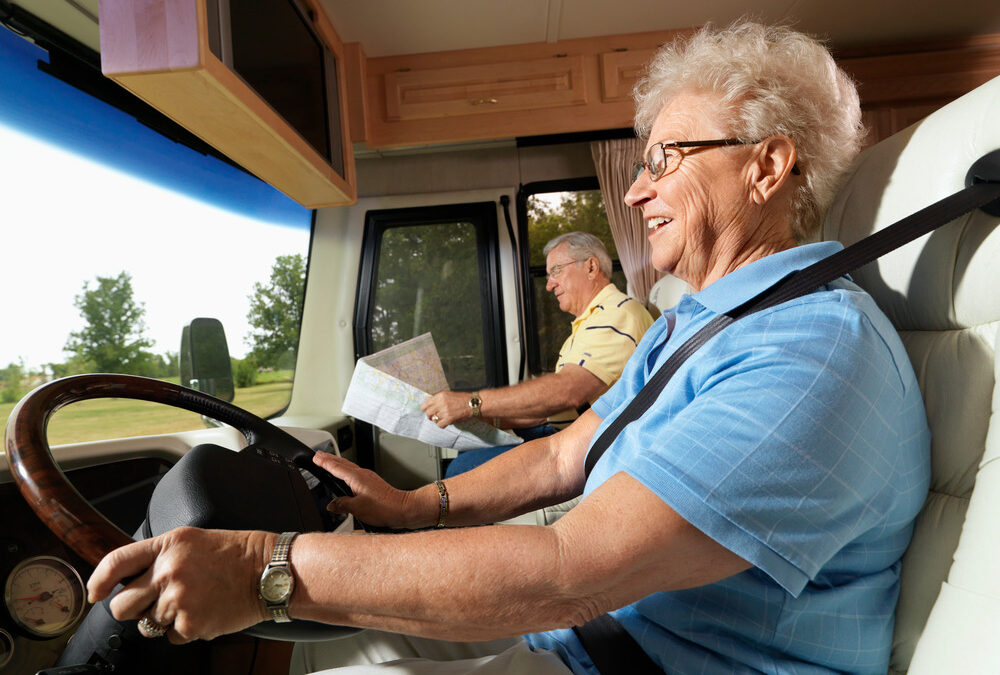Do you need a CDL to drive an RV? The short answer is generally no. You do not need a CDL for most RVs meant for personal use. However, there are exceptions based on size, weight, and state laws. Understand the specifics of how to drive an RV and what’s required before you hit the road.
Key Takeaways
- Most RVs do not require a CDL, but it’s important to check specific state regulations as they can vary based on vehicle size, weight, and type.
- Driving an RV safely requires maintaining a safe following distance, executing wide turns, and braking early due to increased stopping distances.
- Practicing RV driving skills in safe areas like empty parking lots, using cones, and taking professional RV driving courses can significantly improve your driving confidence and safety.
Do You Need a CDL to Drive an RV?
Starting your RV journey can seem daunting, especially when you consider the potential need for a Commercial Driver’s License (CDL). The good news is you usually don’t need a CDL to drive most recreational vehicles, as they aren’t commercial or passenger vehicles. However, it’s important to know the specifics of your RV and your state’s regulations. Some States have exceptions based on factors like the size and weight of your RV. While preparing for your adventures, make sure you’re traveling in comfort and style with our high-quality RV furniture. Upgrade your RV today for a safe and comfy road trip.

CDL Requirements for Driving RVs
A CDL is typically necessary for larger vehicles used for commercial purposes. You’ll need a CDL for RVs or a special license depending on what type of RV you’re driving and the state in which you’re driving it.
Understanding these requirements is not just about following the rules; it’s about ensuring safety on the road. Non-compliance can lead to legal troubles and fines. So, before you start your RV journey, verify the licensing requirements with your state’s Department of Motor Vehicles.
State-Specific Regulations
Driving laws aren’t uniform across all states, and this applies to RV driving as well. Some states have their own rules and regulations, requiring state-specific licenses for RVs depending on factors like weight, type, and contents.
For example, states like:
- Arkansas
- California
- Hawaii
- Kansas
- Maryland
- New Mexico
- Nevada
- New York
Have specific provisions for RV drivers based on the class and weight of the vehicle. Understanding these state-specific regulations is crucial for ensuring compliance and avoiding fines.

How to Drive an RV: Essential Tips for Safe Driving
Steering an RV is an entirely different ball game than driving a regular car. As an RV driver, understanding your RV’s unique characteristics, such as dimensions, and how it differs in acceleration and braking from passenger vehicles is crucial for safe driving.
The Key to driving RVs is to follow these essential RV driving tips:
- Maintain a safe following distance of at least 400 feet, allowing for the longer stopping distance required by the RV’s size and weight.
- Regularly check side mirrors or a wireless observation camera to mitigate larger blind spots.
- Slow down significantly for turns and be mindful of less visibility and potential hazards like roaming wildlife when driving at night.
Wide Turns and RV Maneuverability
Mastering wide turns is fundamental to RV driving, especially when handling a large RV. Due to their size, RVs have a bigger turning radius than regular vehicles. This means turns, especially right turns near curbs, should be executed slowly and widely to accommodate the vehicle’s length and width.
Another factor to consider is the RV’s tail swing and trailer sway. Tail swing refers to the distance the rear of the RV swings in the opposite direction while turning. Meanwhile, trailer sway is the side-to-side movement of the trailer. To stay in your lane and keep other drivers safe, you need to be aware of these things to execute maneuvers smoothly.


Braking When Driving RVs
The speed at which you drive your RV and how you brake can significantly affect your safety on the road. Due to their significant weight, RVs require longer distances to come to a stop, necessitating early braking to ensure safety. It’s important to ensure your RV interior, including RV dinette booths and tables, is secured and won’t slide or move during emergency braking.
Maintaining a slower speed in an RV will allow you more time to react to road conditions and reduce the risk of accidents. When navigating downgrades, using engine braking by downshifting early and intermittently applying the brakes can help maintain a controlled descent.
Practice Makes Perfect: How to Drive an RV Confidently
Driving an RV smoothly and confidently comes with practice. Developing motorhome-specific driving skills is essential, and getting used to the size of the RV and how it maneuvers is the first step in this process.
Mastering specific maneuvers, like turning points, tail swings, and lane positioning, is vital for safe driving. You can practice driving an RV in empty parking lots with cones for at least one hour per day for a week or consider professional RV driving courses.
Practice Driving Your RV in Empty Parking Lots
You should practice in a safe, spacious area before driving an RV in traffic. An empty parking lot is an ideal location for new RV drivers to practice their skills.
Using cones as guides during practice can help RV drivers better understand the dimensions and handling of their vehicles. The focus should be mastering parking and executing K-turns and other common RV driving maneuvers.
RV Driving Courses
Taking an RV driving course offered by a reputable RV dealer or organization can make learning how to drive an RV easier. Lessons on RV driving can help you understand how topics like your turning radius and wheelbase affect your maneuverability. You’ll also be able to practice backing up and emergency maneuvers. Learning how to use an RV GPS effectively can also help you focus on your RV driving experience while on the road.
These courses aren’t just for beginners. Seasoned travelers, too, report increased confidence when navigating various road situations after taking RV driving courses. These courses often include personalized instruction that caters to the driver’s experience level and specific needs.

Weather Considerations for RV Driving
Weather conditions, particularly wind, can impact RV handling. In windy conditions, slowing down and increasing the distance between the RV and other vehicles on the road can help prevent accidents.
Keeping both hands on the steering wheel during windy conditions can give you better control over the RV. Taking more frequent breaks during windy conditions can also help reduce driver fatigue. Before setting out on a trip, check the weather forecast for bad weather.
RV Maintenance and Preparation
Regular RV maintenance is crucial for a smooth and worry-free journey like any other vehicle. Taking care of your RV will help keep you safe and make your investment last longer. For Example, If you have AC rechargers or gauge kits, you must ensure the oil and coolant are at the right level.
Another aspect of RV maintenance is keeping a close eye on the HVAC system. Regularly cleaning your RV, as well as preventive maintenance and inspections, are key to a well-maintained RV. It’s a good idea to schedule a tune-up and maintenance check with a reliable RV mechanic before you go on an extended journey. This will help prevent any unexpected issues along the way.
Just like car insurance, RV insurance is essential for financial protection in the event of accidents, theft, or other incidents while driving your RV. These policies typically include various types of coverage, such as liability, collision, and comprehensive. Insurance companies also provide personal property coverage to ensure you are well-protected during your travels.
Practice Driving Your RV
In this guide, we’ve covered the essentials of RV driving, from understanding licensing requirements to mastering wide turns and effective braking. Do you need a CDL to drive an RV? While often not required, some states have exceptions.
We’ve emphasized the importance of knowing your state laws and practicing and the benefits of professional RV driving courses. We’ve also highlighted the importance of regular RV maintenance and preparing for weather conditions. With these tips and insights, you can navigate your RV journey confidently and safely.
The key to safely driving RVs are maintaining safe distances, executing wide turns, and knowing your vehicle’s braking needs. Become confident in driving your RV by taking RV driving classes, practicing in safe areas, and familiarizing yourself with your RV’s handling. This guide equips RV drivers with the necessary skills to start driving RVs.
Get RV Repairs and Upgrades!
When the interior of your RV needs an upgrade, Bradd and Hall is here to help! We carry custom wood furniture products, and we’ll perform services from complete coach reflooring to simple wood window valence installation. We also carry RV furniture, including theater seating, sofas, captain’s chairs and more. Call Bradd and Hall for a custom RV interior renovation by our professionals!
Frequently Asked Questions About Driving RVs
Do you need a CDL to drive an RV?
You usually do not need a CDL to drive an RV, but some states may require a special license depending on the RV’s size, weight, and type. Check the specific requirements for the state you plan to drive in.
How can I practice driving an RV?
To improve your skills, practice driving an RV in an empty parking lot using cones for at least an hour per day for a week. With dedication, you can become more comfortable behind the wheel.
Are RV driving courses beneficial?
Yes, RV driving courses are beneficial. They provide comprehensive training on various aspects of driving an RV, improving your confidence on the road.
What maintenance is necessary before a long trip driving an RV?
Before a long RV trip, it’s necessary to maintain engine oil, radiator coolant, and Freon levels. You should also monitor the HVAC system and have brakes and suspension systems inspected. Consider scheduling regular RV maintenance appointments with a trusted RV mechanic.
How should I Drive my RV during windy conditions?
During windy conditions, slow down and increase the distance between your RV and other vehicles. Keep both hands on the steering wheel, and be patient to ensure you practice safe RV driving.

